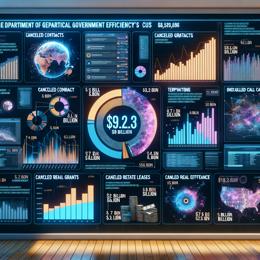Image created by AI
Profits Plunge for Bitcoin Miners as JPMorgan Cites 'Recent Record' Low in Sector’s Earnings
The crypto mining industry, once lucrative amid the bull run of Bitcoin, has hit a severe snag as profitability margins have shrunk to historically low levels. According to a study conducted by financial services giant JPMorgan Chase & Co., Bitcoin mining companies have encountered the lowest profitability index in recent memory during September, with a 6% decrease in daily block reward gross profit throughout the month.
This downturn in miner earnings aligns with a three-month trend of declining revenues, unexpectedly juxtaposed against a moderate uptick in average Bitcoin prices during the same period. JPMorgan analysts Reginald L. Smith and Charles Pearce have highlighted these concerns in their recent report, sketching a rather bleak picture for the mining sector's immediate financial health.
The report traces a direct link between the diminished revenue and a crucial event in Bitcoin's operational framework—the halving. Occurring every four years, the halving effectively slashes the block reward given to miners by 50%, a safeguard to prevent inflation and uphold the cryptocurrency's value by maintaining its maximum supply limit at 21 million tokens. The most recent halving in April has had a considerable impact, potentially stripping the industry of more than $10 billion in annual revenue at current Bitcoin valuations.
Exponential growth characterized the formative years of Bitcoin mining, with valuations soaring in tandem with the digital currency's worth. There was a time when the market capitalization for major US-based mining corporations cumulatively outstripped the $20 billion mark. However, the landscape seems to be shifting, particularly with prevalent challenges such as the halvings and an influx of well-capitalized, large-scale mining operators into the US market.
Bitcoin mining's intrinsic energy consumption and the necessity for highly specialized hardware to conduct point-to-point transactions securely on the blockchain further aggravate the thinning profit margins. This intensive process sees miners vying for a finite pool of Bitcoin rewards; the increased processing power overall means individual players are less likely to reap ample rewards.
This dire state of affairs is reflected in the stock market as well, where shares of MARA Holdings and Riot Platforms, two of the largest publicly-traded miners in the US, have experienced dramatic drops of 36% and 54% this year, respectively. It seems the gold rush of crypto mining is experiencing a significant cooldown, and the pathway to rejuvenation remains shrouded with uncertainties over market regulation, energy efficiency, and technological advancement.
As Bitcoin continues its volatile dance, those that mine its digital depths are grappling with an ever-changing landscape that demands adaptability, fiscal prudence, and inventive strategies to remain profitable and afloat in the face of looming challenges.










